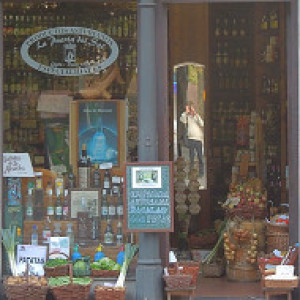Bom Jesus do Monte, Braga
Today we spent a full day in Braga, northern Portugal. The city was founded by the Romans as the civitas of Bracarum Augusta in 20 BC in the territory of the celtic Bracari or Bracaros tribe. It is now the third largest city in Portugal outside the Porto and Lisbon areas.
We were fortunate to stay in small a hotel of the same name, the Bracarum Augusta, in the centre of town. Immaculately and tastefully restored as a hotel, the building dated from the 14th C. and had originally been the town house of the nearby benedictine Monastery of São Martinho de Tibães.
In the morning we wandered around town viewing its surfeit of baroque and rococo churches and the cathedral. The latter has a large collection of reliquaries, so much so that there was even had a gold painted casket with "Assorted relics" written on the side. For odds and ends presumably.
Eventually we came upon the Palácio dos Biscainhos museum without really knowing what to expect. It takes its name from the side-street, in which it is located, which in turn took its name from the Biscayan craftsmen who lodged there while working on the city's various building projects.
We were invited to follow a group of portuguese on a guided tour, reading from cards in english. However another guide soon told us that we could go on ahead on our own, but then stayed with us, giving us our own personal tour, which was very kind of him.
The centre of one room contained a raised carpetted platform. Apparently until the 17th century it was common for portuguese noblewomen to spend their days sat cross legged on such a platform, surrounded by family and servants, eating chatting, sewing, corresponding etc. The tradition had apparently been absorbed from neighbouring iberian moslem kingdoms and had persisted until superseded by french courtly customs. The painted ceiling of another room includes an illustration of a family member Fr. Carvalho, a jesuit missionary, who had been burned at the stake in Japan in 1624.
The highlight however were the palace's baroque gardens.
After a brief siesta we decided to walk the 5 kilometers to the Sanctuary of 'Bom Jesus do Monte' on a hillside outside Braga. A long hot walk, but fortunately once we reached the foot of the sanctuary we were able to take the water-balance funicular railway up to the top, running parallel to the steps.
The Bom Jesus sanctuary was recommended to us at the tourist office and was well worth the effort, not just for the sanctuary itself but for the surrounding parkland, including a boating lake.
At the end of the visit a local bus carried us back down the hill into town at break-neck speed, where we later indulged in a francesinha. This is a kind of local fast food. It is a sort of double bread sandwich of roast meat and sausage, completely covered in melted cheese, and served in a dish swimming in gravy, with optional chips. It was invented by a restaurant in Porto (which we later visited), but is now very popular and served by many restaurants in northern Portugal.

Comments
Sign in or get an account to comment.


